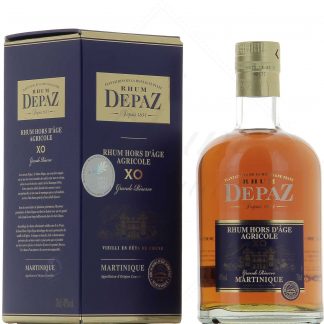Rhum AOC Martinique
The history of AOC Martinique
The 19th century saw the birth of rhum agricole, a rum made from pure cane juice, of which Martinique is one of the proudest representatives. Faced with competition from beet sugar, cane growers concentrated on making rum, bypassing the sugar and molasses refining stage. They improved their methods over time, then imposed what has today become a French exception, and a style in its own right.
In 1972, the Association Professionnelle des Producteurs-Embouteilleurs de Rhum Agricole de la Martinique (APPERAM) began work to gain recognition for the specific nature of their work. This quickly led to the award of a Label Rouge, a well-known distinction in France. But the ambition of the Martiniquais was indeed to rise to the level of the greatest French agricultural products, and obtain an Appellation d'Origine Contrôlée (AOC).
This AOC, in addition to conferring a certain prestige, would enable Martinique rum to precisely define its identity. The aim was also to preserve the methods that led to its indisputable quality. As a result, consumers would be able to turn without fear to a labelled rum, and be sure of rediscovering a style and consistent quality standards.
In the 1980s, the "old hands" of Martinique rum, such as Jean-Pierre Bourdillon (La Mauny / Trois Rivières), Jean Bally, André Depaz, Jean Neisson and Jean-Claude Benoît (Saint James), campaigned and worked with the INAO to establish this AOC. This was achieved in 1996, when the "AOC Rhum Martinique" decree was published.
Outline of AOC Martinique
AOC Martinique rums must meet very precise specifications. These cover the entire identity of Martinique agricultural rum, from the historical facts that led to its current status, to the terms of bottle labelling.
Rum characteristics
The first chapters of the specification focus on the technical characteristics of the rum. These include a minimum alcohol content of 40%, and a minimum quantity of 225 grams of aromatic congeners per hectoliter of pure alcohol.
But above all, it describes the desired organoleptic properties, i.e. the aromas and flavors to be found in it. This is detailed according to whether the rum is white, aged-sub-bois, or aged. Before being awarded the label, each rum must pass before a tasting panel, which determines whether the AOC style has been respected.
We then describe what distinguishes this rum from other products in its category, before going into more specific details:
Geographical area
The AOC Martinique is naturally linked to a territory. This is defined not only for cane planting, but also for all subsequent operations. This means that rum must be fermented, distilled and aged in Martinique.
The parcels of cane recognized by the AOC are shown on a map. Each one is considered to reflect the style and terroir of Martinique. The diversity of micro-terroirs is nevertheless assured, as the island boasts many different climates and soils.
Methods for obtaining cane juice
The techniques and traditions that go into making a typically Martinique agricultural rum have been precisely recorded. It starts with the irrigation of the cane, its harvesting period, and the yield limits of the plots.
The pressing of cane juice is also regulated, and its physical and chemical properties are controlled. This ensures the quality of the juice, as well as its suitability for column distillation.
Fermentation
Fermentation must be discontinuous and in open vats, allowing the addition of indigenous yeasts and bacteria. Vats must be made of stainless steel, however, and must not exceed a capacity of 500 hectoliters, so that fermentation can be closely controlled. Fermentation time is limited to 120 hours, but no minimum is specified, leaving plenty of room for diversity. Fermented vesou should not exceed 7.5% alcohol.
Distillation
Only distillation columns are used for AOC Martinique rum. A continuous distillation process is used, which excludes repasse stills. The alcohol content at the end of distillation must be between 65 and 75%.
Breeding
White rums are rested for a minimum of 6 weeks, while aged rums are rested for 12 months. For the latter, only oak is authorized.
Old rums can bear this label after 3 years of maturation. Here too, only oak is used, and casks must have a capacity of less than 650 liters. Vintage rums must be aged for at least 6 years.
Bottling and labelling
Before bottling, an aged rum can be colored with caramel to adjust its color. However, the resulting obscuration rate is limited to 2%. This means that the measurement of alcohol content can be distorted by 2%, due to the extraction of wood and the addition of caramel.
3-year-old rums may bear the VO label.
VSOP rums are those at least 4 years old. We can also refer to Réserve Spéciale, Cuvée Spéciale or Très Vieux.
For rums aged 6 years or more, there are a number of appellations: Extra Vieux, Grande Réserve, Hors d'Age and XO. Read less















